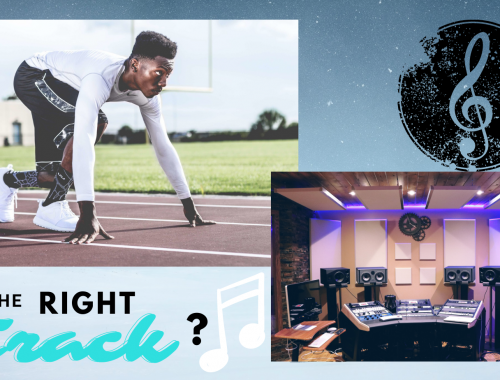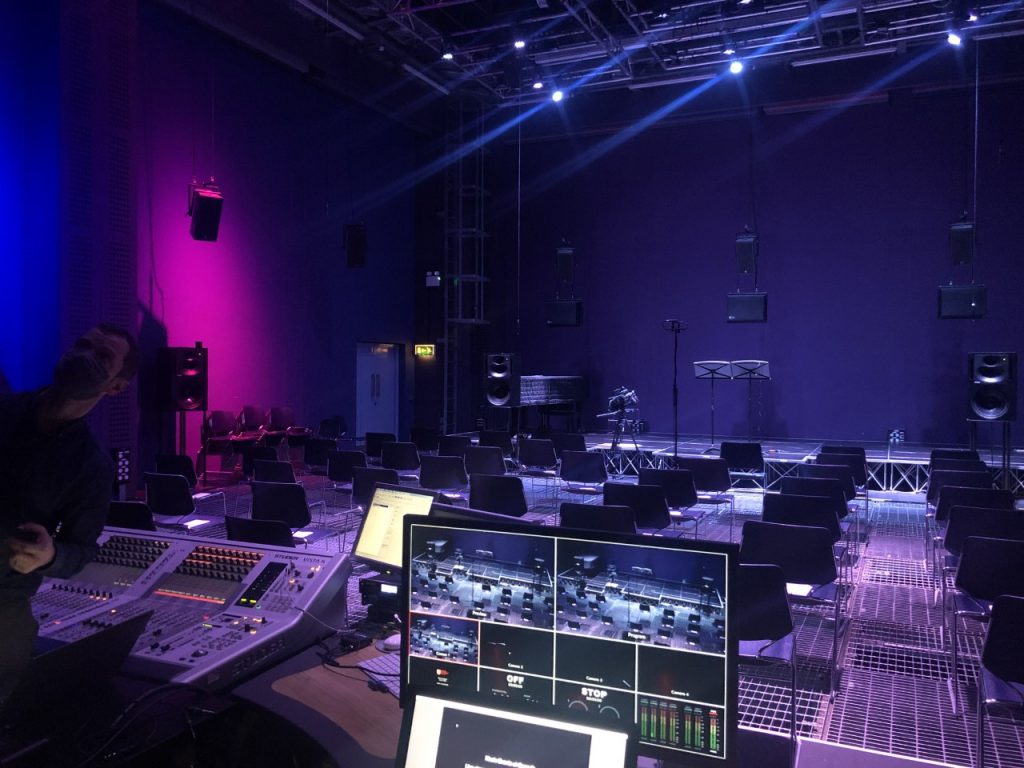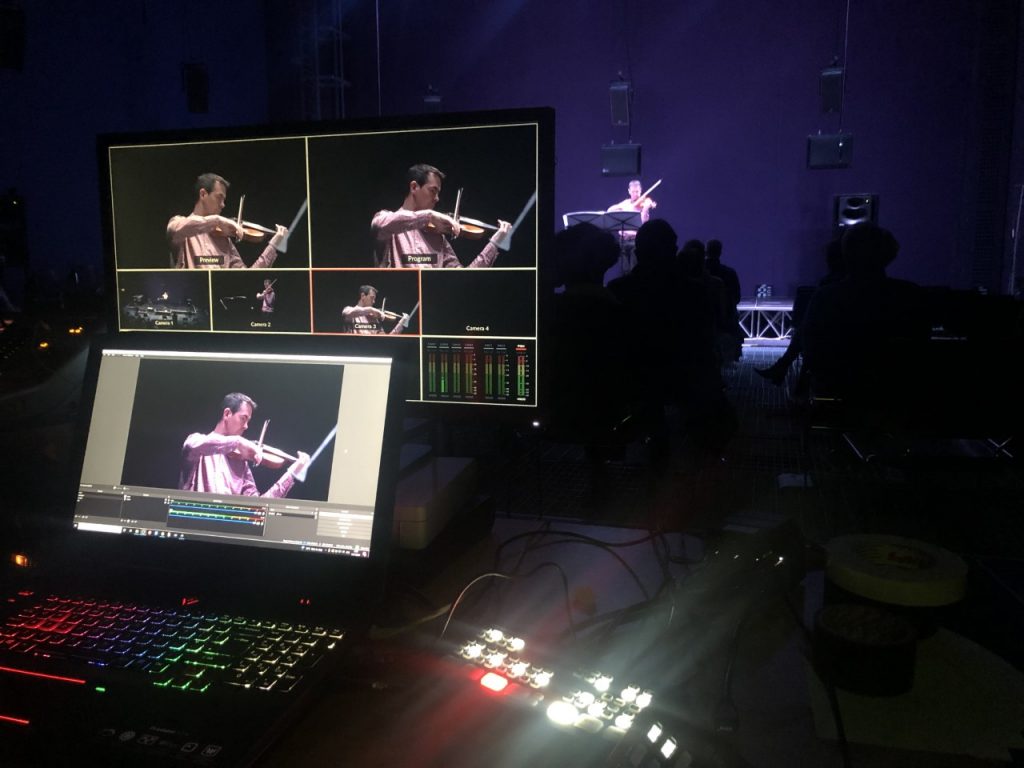LIVE STREAM: Art Through the Camera Lens

I began my placement with the SARC Media Team on the 7th October this year. My role entailed responsibility of live streaming the lunchtime concerts that occur in the Queen’s University Music Building. The work experience so far has been fun. Through my placement, I have got to meet a lot of interesting and talented people and get to watch them perform amazing musical pieces (for free, always a bonus).
Despite how much I’ve been enjoying my placement so far, certain situations have arisen that I have had to assess and deal with along the way. To reflect on these instances, I will be using Gibb’s Reflective Cycle (1988) to analyse my experiences.
On my first official day of placement, I took on the role of camera operating. At the beginning of each shift, I have to assist with setting up three cameras in the concert hall and connect them to the vision mixing studio downstairs in the building, in order for the concert to be live streamed. One issue that presented itself with the cameras was adjusting the white balance setting on each of the cameras. We were working with three cameras, all positioned in different places within the hall, therefore they were distanced and positioned differently to the large stain-glasses windows, meaning each camera was appearing to be contrasting brightness due to both the natural light and artificial light in the room and some of the cameras appeared more green-toned or yellow.
My feelings towards this issue were, this doesn’t look good. When the vision mixer is going to cut to different cameras during the stream, viewers won’t like how it looks as it appears like the cameras are in different rooms and it just wouldn’t be visually pleasing, and that’s the whole point of the live-streaming is to provide people who cannot attend the concert with a high quality, aesthetically pleasing livestream so they can feel as if they were actually there.
What was good about this experience was that it was both a small learning curve but also could be rectified easily and fairly quickly. I wouldn’t say there was anything bad about this experience other than the feeling of not knowing what to do about it and feeling unprofessional for not knowing.
Although I felt unprofessional and that I was a bit useless in the situation, I shouldn’t have felt like that. Craig (who coordinates the livestreams and is basically my mentor/supervisor/superhero) was really helpful in teaching me how to set the cameras up and how to adjust the settings on the cameras to make them look good. I’ve learnt a lot from him and he has really helped me progress week by week.
In conclusion of this experience, I could have considered prior to setting up that this was an issue that may occur. I could have done my research on setting up camera shots and brushed up on my broadcast theory which helps when coming to practice broadcasting.
If this situation rose again, which it did every week, I would assess how each camera looks, knowing what I know now I would easily just play around with the different presets on the cameras and adjust accordingly to make them look the same and communicate with the team members in the vision mixing room as to how it looks on the stream as that’s what’s most important.
“We do not learn from experience… we learn from reflecting on experience.” – Dewey
Another issue that came up on our first live streamed concert was the position the musicians were going to take on stage. Once we got everything set up and began live-streaming on this particular day, something I forgot to take into account was how the performers were actually positioned on stage. There was a pianist and a violinist and we had set the cameras up assuming that the violinist would be performing stood centre-stage, but instead she stood parallel to the pianist, meaning that one of our camera angles didn’t really work as the violinist was blocking the view of the pianist.
I was a bit annoyed at myself for not having thought of this issue beforehand. There were beautiful moments where they would look at each other whilst playing and we were unable to capture them due to this issue.
It was a bad experience as it meant there were moments in the stream that had I positioned the camera right we would have been able to capture some really cool shots of the two musicians being in the zone and bouncing off of each other’s vibes. However, this was actually a good experience upon analysing it in hindsight as it meant this issue never happened again in future live streams.
Something else I can take from this situation is the confidence I have built in introducing myself to the performers each week and my communication skills have improved based on these interactions we have with the performers each week.
I know now to ask the musicians during their rehearsals prior to the concert beginning where they’d prefer to stand during the performance and suggest what way we think we could capture them best if they don’t have a preference.
If the situation rose again, which has happened when musicians change their stance on stage mid performance even though we had the conversation with them beforehand, I know not to panic, and instead work around the musicians and make it work, and not just assume that good camera shots are unachievable now that a small change has happened.
By using Gibb’s reflective cycle, it has really enabled me to learn a lot from my experiences, even the things that seem small, like adjusting the settings on the cameras during the setting up process. They all matter, and every time one of these experiences occur, our live streams keep getting better and better. It has taught me that reflection is an extremely important element of learning, and without it, progression would be very hard. I’m very excited to make further progress during this work placement.
Gibbs, G. (1998) Learning by Doing: A Guide to Teaching and Learning Methods. Oxford Brooks University, Oxford.
Dewey, John. Experience and Education. New York: Macmillan, 1963. Print.
You May Also Like

Learning from experience- Am I on the right track?
28 November 2021
Feast vs Famine
26 November 2021




